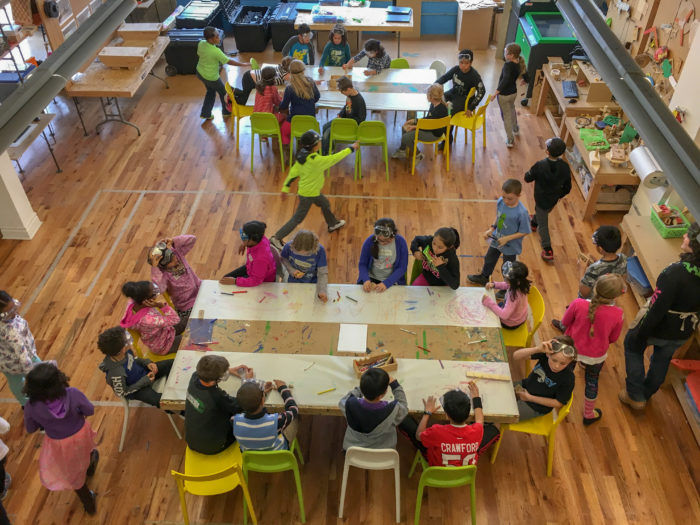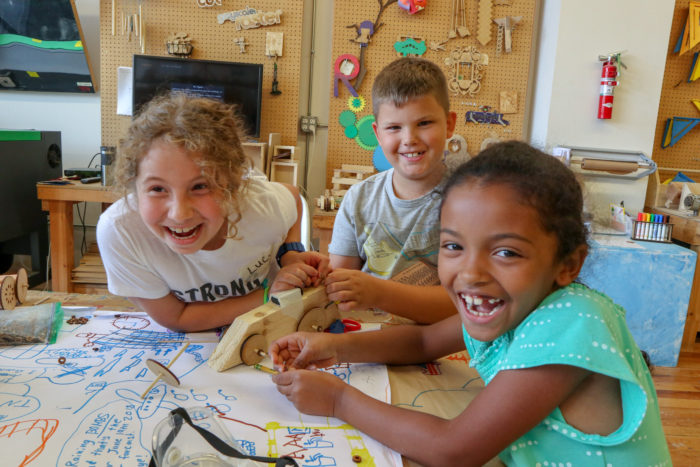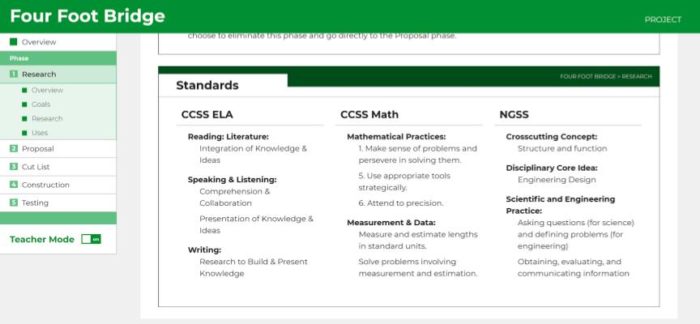Using Design Projects to Connect to Classroom Standards
To help you to identify the ways in which our content can support and complement the learning agendas in your everyday classrooms, we have taken care to reference existing standards of Common Core State Standards for Math and English Language Arts as well as Next Generation Science Standards where they are most active and relevant within our content. Within the content pages, you’ll find tables (like the one to the right) referencing the applicable standards.
While the curriculum references existing educational standards, it is not intended to be fully comprehensive of them. Standards references are offered as a way to help you identify and determine ways to infuse this content through engaging, hands-on design and making experiences. Our content intentionally avoids alignment with a particular grade level, and with the correct guidance and filtration can be introduced to nearly any grade level.
Cross-Curricular Connections

Additionally, this curriculum is designed to work across subject areas. We identify potential connections throughout the curriculum but recommend that teachers, as the disciplinary content matter experts, connect and layer in disciplinary content as appropriate and needed for their classrooms and students.
The teacher can and should be the driver of the subject-area or disciplinary focus and should feel empowered to utilize the flexibility to make their own connections. Because of this interdisciplinary flexibility, there are also inherent opportunities for teachers to collaborate across classrooms and subject areas. We encourage you to explore these opportunities to create robust, multi-faceted engagements for your students.
A Note About Social and Emotional Learning
Social and emotional learning (SEL) is easily connected to design and making. Students engaging with this curriculum will learn and practice new skills and ways of thinking that will challenge them as they develop the attitudes and dispositions of designers and makers.
There are opportunities for connections at all grade levels and across all SEL goals throughout this curriculum. Educators are encouraged to create their own connections by supplementing with additional reflection/assessment questions as appropriate for their specific students and classrooms. There are additional opportunities for embedding SEL components within projects by situating SEL connections within the prompts. For example, you could alter or create prompts to ask students to develop designs which address challenges related to individuals or groups and/or attempt to solve challenges in a classroom, school, or community.

The Bit Space SEL Integration PDF (above) highlights some of the most relevant connections with the Illinois State SEL Goals.
Overview of potential paths of SEL integration with this curriculum:
Individual Work
Personal goal setting and reflection on strengths, skills, decision-making, and behavior.
Example Assessments:
- Describe a new skill that you developed and any obstacles that you overcame while developing it.
- How did you demonstrate positive choices when interacting with peers?
- Describe a goal you want to achieve and how you plan to achieve it.
Group Work
Planning and reflection on group interactions and integration.
Example Assessments:
- Discuss how your group overcame conflict to reach an agreed decision.
- What strategy or strategies did you use to resolve conflict in your group?
- How did you contribute as a member of your group?
Project Prompts
Embedding SEL components within project prompts (ex: create prompts that aim to address challenges for the classroom, school, or community).
Design Thinking
Anytime students are practicing design empathy or working to understand their design’s users or potential users, they are engaging with recognizing and analyzing the perspectives and feelings of others.

